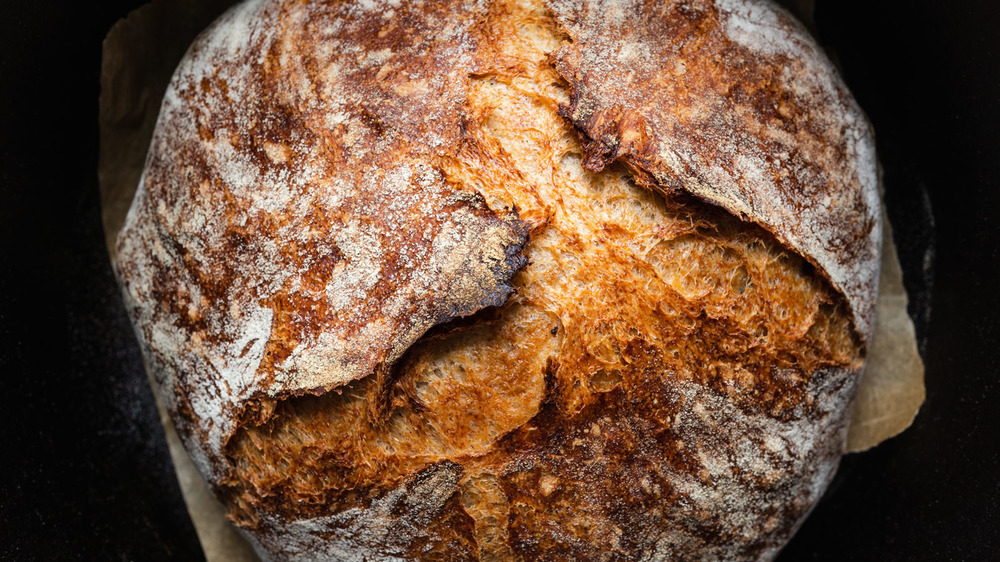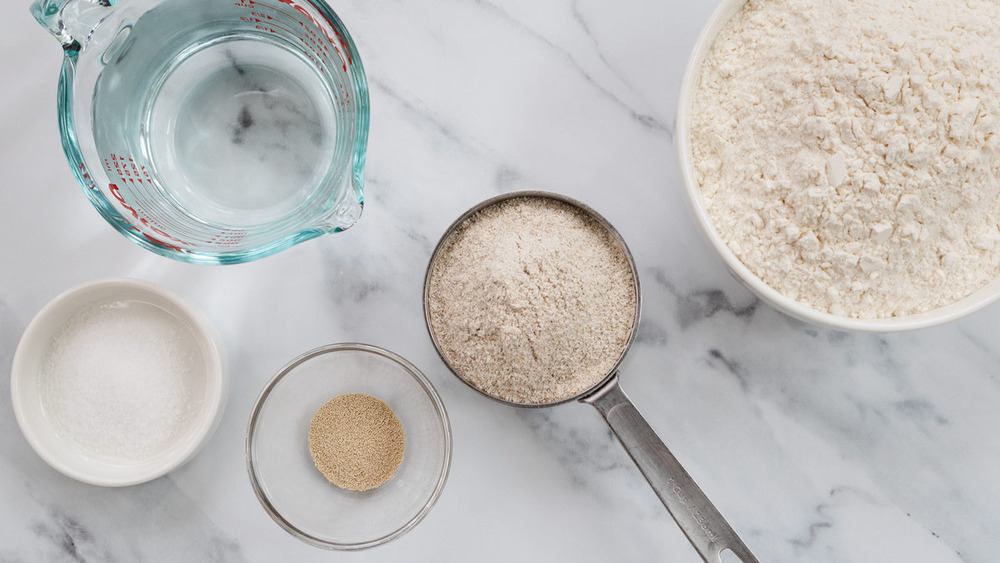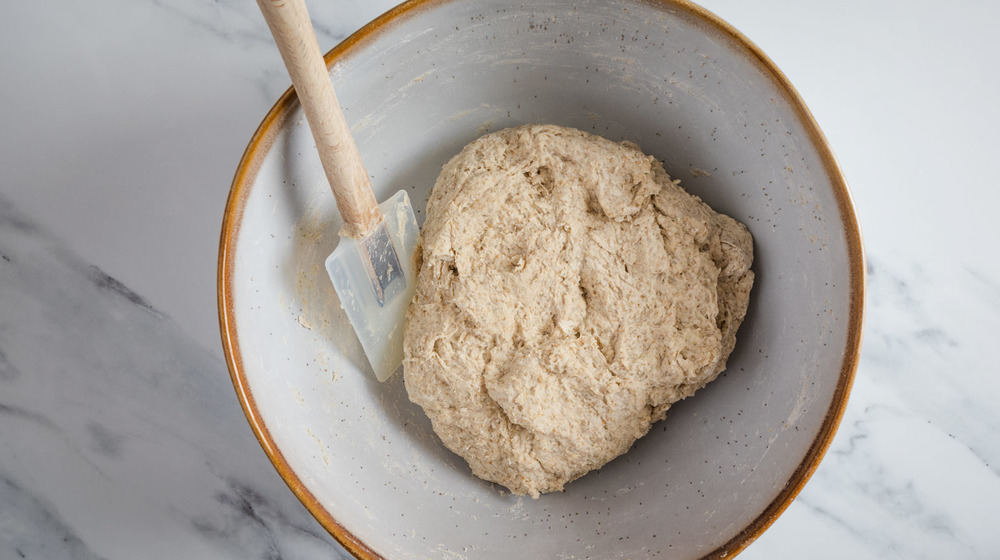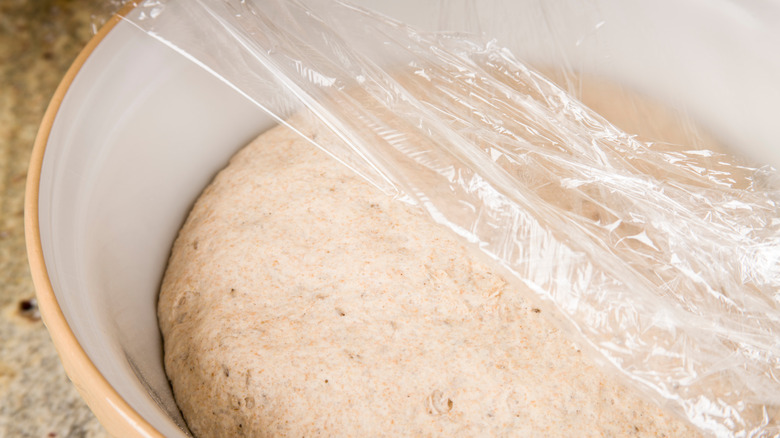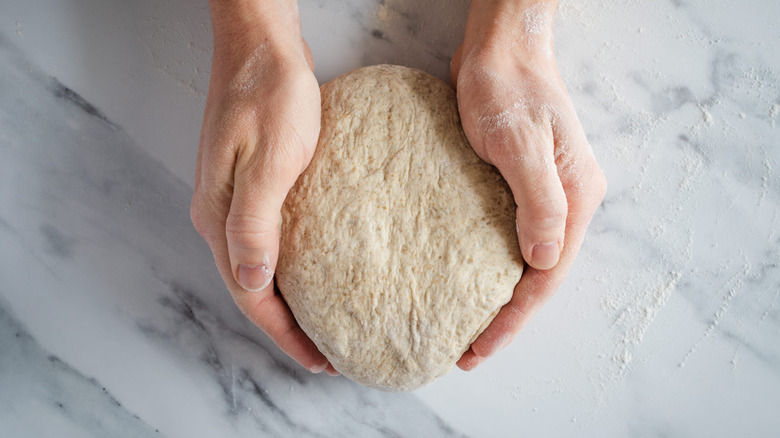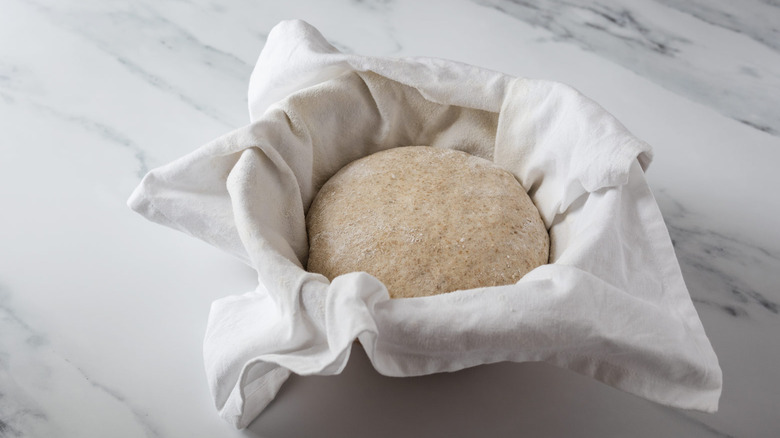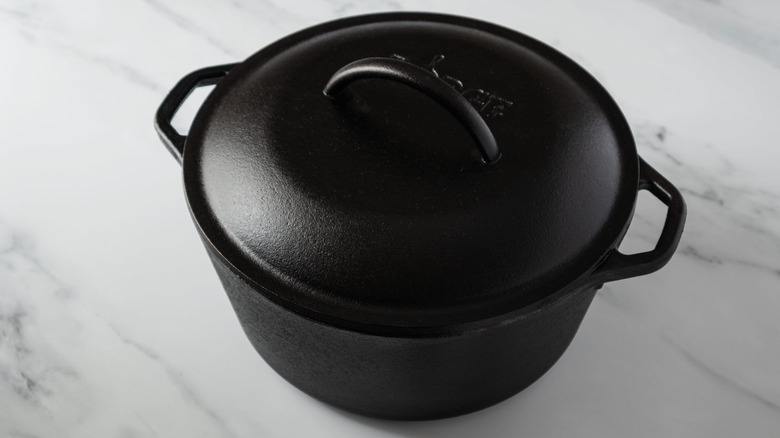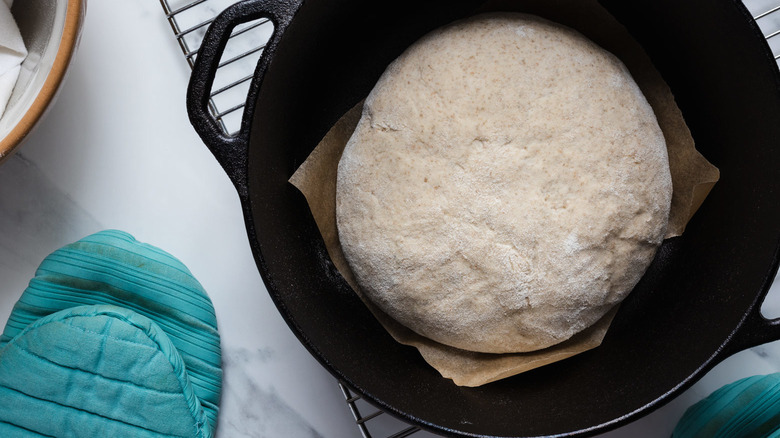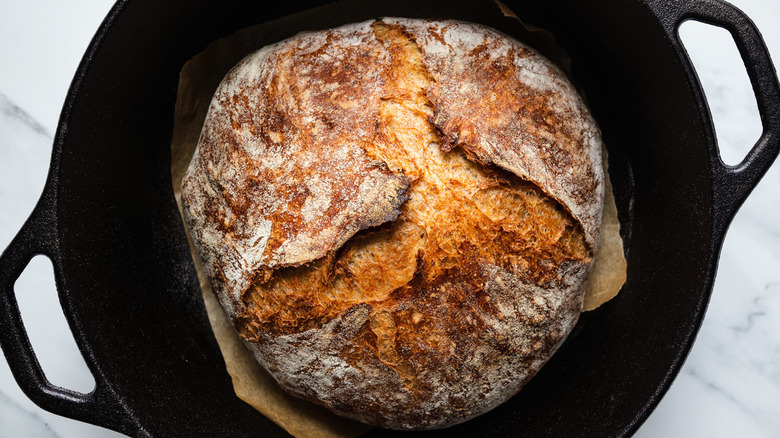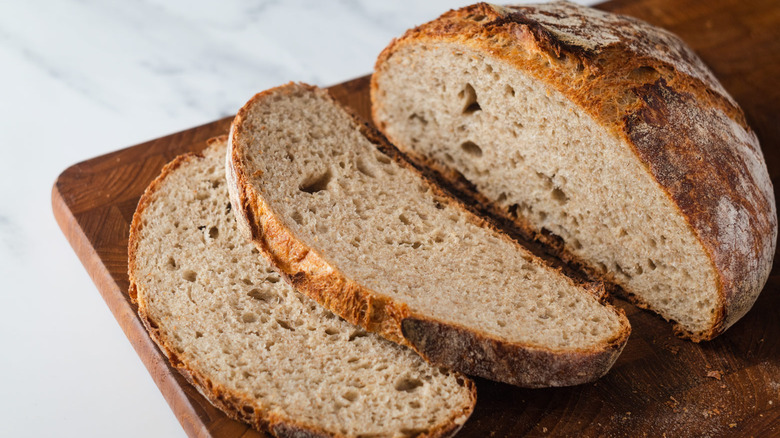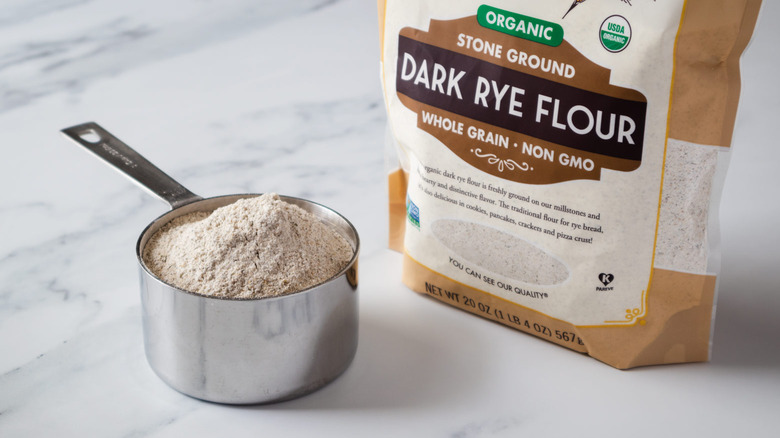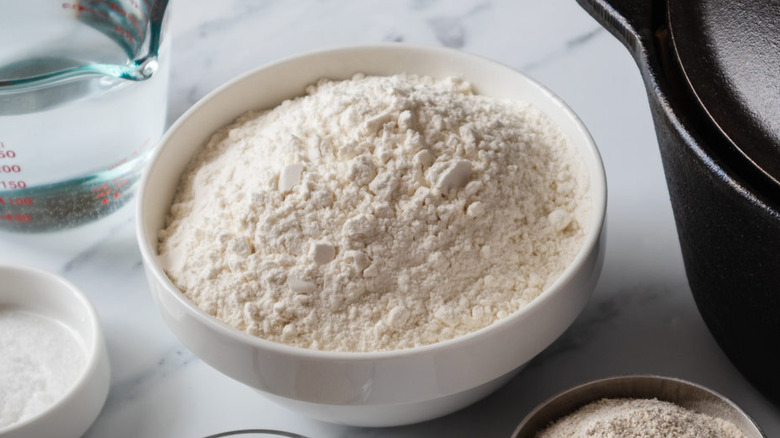Easy Homemade Rye Bread Recipe
We may receive a commission on purchases made from links.
Rye bread dates all the way back to the Middle Ages, with variations coming from Northern and Eastern Europe. In Germany and the U.S., rye bread's malty, earthy flavor is often augmented with caraway seeds, which gives rye bread a distinctive taste that's different from other seeded breads. This recipe for easy no-knead rye bread is more traditional (meaning, no seeds) and was developed by Mark Beahm, whose blog, The Sunday Baker, revels in the joys rustic European baking. Beahm was raised in Maine, where he told us, "There was only one bakery in my hometown at the time that specialized in European bread and pastries."
He now lives in London and shares his passion for the food, culture, and history of the European countries he's visited. Beahm's no-knead bread couldn't be simpler, and it will reward your minimal effort with a bread that has a rick, dark crust and soft and chewy interior. "I always wanted to learn to bake a loaf like that," Beahm said, "This bread is almost foolproof, and yet it will get you most of the way to that perfect loaf." Prep time for this recipe literally takes 5 minutes, and after that, you just let the flour and yeast do its thing. Once it's risen, you bake it in a Dutch oven, and 50 minutes later, you'll turn out a rye bread you'd swear a professional baker had baked.
Gather together the ingredients for rye bread
The recipe calls for bread flour (not all-purpose flour), as well as rye flour. Mark Beahm uses dark rye, which has a bold and molasses-like taste. If you're a newbie to rye, then a medium rye flour is a Goldilocks "just right" rye: It has a lighter texture and an assertive, but not overpowering, taste.
You can still make this no-knead recipe if you can't find rye flour or prefer to use something else. "This recipe is pretty flexible," Beahm said. "You can substitute it with whole wheat flour or just use all white bread flour. You'll still have a delicious loaf of bread." The remaining ingredients are just instant dried yeast, salt, and water. Measure out the ingredients, and you're ready to go.
Step 1: Mix the dough
Stir together the flours, salt, and yeast in a large mixing bowl. Add the water and mix until no bits of dry flour remain. The dough will be very sticky.
Step 2: The first rise
Cover the bowl with plastic and let the dough rise at room temperature overnight until the dough has doubled in size, about 12 to 18 hours.
Step 3: Shape the loaf
Generously dust a work surface with flour. Tip the bowl slightly and use a rubber spatula or your fingertips to gently remove the dough from the bowl onto your work surface without tearing it. Lightly flour your hands and gently fold the dough into itself, shaping it into a ball.
Step 4: The second rise
Generously dust a tea towel with flour and gently place the dough onto the towel, seam side down. Loosely fold the towel over the dough and place it in a small mixing bowl. Leave it to rise until it is almost doubled, about 1 to 2 hours.
Step 5: Heat the oven
Half an hour before the dough has finished its second rise, put a rack in the lower third of the oven and set a Dutch Oven on the rack and preheat to 475 F.
Step 6: Bake the loaf
Use oven mitts to carefully remove the preheated pot from the oven and remove the lid. Use the tea towel to gently invert the dough into the Dutch oven with the seam side facing up. Be careful; the pot will be very hot. Cover the pot and bake for 30 minutes.
Step 7: Brown the loaf
Remove the lid from the Dutch oven, then continue baking until the bread is a dark golden brown, about 15 to 20 minutes longer.
Step 8: Slice and serve the rye bread
Carefully lift the bread out of the Dutch oven, and let it cool on a rack. Let the loaf cool for at least 20 minutes before slicing.
What to make with homemade rye bread
Homemade Rye Bread Recipe
No need to head to your local bakery for a loaf of rye bread. This no-knead rye recipe delivers a delicious and stunning loaf that you'll swear a pro baked.
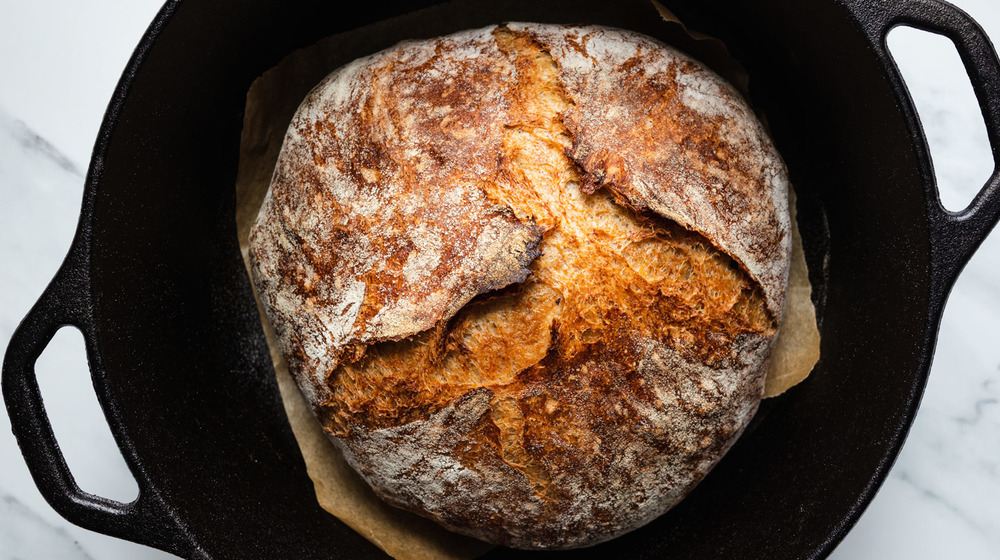
Ingredients
- 3 cups bread flour
- 1 cup dark rye flour
- 2 teaspoons fine sea salt
- 1/2 teaspoon instant dried yeast
- 1-1/2 cups water
Directions
- Stir together the flours, salt, and yeast in a large mixing bowl. Add the water and mix until no bits of dry flour remain. The dough will be very sticky.
- Cover the bowl with plastic and let the dough rise at room temperature overnight until the dough has doubled in size, about 12 to 18 hours.
- Generously dust a work surface with flour. Tip the bowl slightly and use a rubber spatula or your fingertips to gently remove the dough from the bowl onto your work surface without tearing it. Lightly flour your hands and gently fold the dough into itself, shaping it into a ball.
- Generously dust a tea towel with flour and gently place the dough onto the towel, seam side down. Loosely fold the towel over the dough and place it in a small mixing bowl. Leave it to rise until it is almost doubled, about 1 to 2 hours.
- Half an hour before the dough has finished its second rise, put a rack in the lower third of the oven, set a Dutch oven on the rack, and preheat to 475 F.
- Use oven mitts to carefully remove the preheated pot from the oven and remove the lid. Use the tea towel to gently invert the dough into the Dutch oven with the seam side facing up. Be careful; the pot will be very hot. Cover the pot and bake for 30 minutes.
- Remove the lid from the Dutch oven, then continue baking until the bread is a dark golden brown, about 15 to 20 minutes longer.
- Carefully lift the bread out of the Dutch oven and let it cool on a rack. Let the loaf cool for at least 20 minutes before slicing.
Nutrition
| Calories per Serving | 159 |
| Total Fat | 0.8 g |
| Saturated Fat | 0.1 g |
| Trans Fat | 0.0 g |
| Cholesterol | 0.0 mg |
| Total Carbohydrates | 32.2 g |
| Dietary Fiber | 3.4 g |
| Total Sugars | 0.4 g |
| Sodium | 173.7 mg |
| Protein | 5.9 g |
Can you make gluten-free rye bread?
Technically speaking, no, you can't actually make a gluten-free version of rye bread. That's because rye flour is, as the name itself suggests, an essential element of rye bread, and rye flour is, by nature, glutinous. If you're someone with a gluten sensitivity, while we're not exactly sure what led to you clicking on this recipe in the first place, fret not! There are indeed some tips and tricks you can consider to make your own gluten-free bread that's at least reminiscent of a rye loaf, even if it's not the real deal.
When it comes to the gluten-free flour to use, consider an option that mimics the notes you get from rye bread, like nuttiness and a hint of malt. Oat flour and brown rice flour are both really solid picks that will give you a similar effect. A hit of cocoa powder will also create some depth (as well as that dark color associated with rye). And while this particular recipe doesn't include caraway seeds, they will definitely give you strong rye bread vibes in your gluten-free version.
What is the difference between bread flour and all-purpose flour?
When making this loaf, you might be tempted to swap out the bread flour for all-purpose flour. While you'll be able to get away with it and still have a serviceable loaf, we definitely recommend going the extra step and using bread flour. Why's that, you ask? Well, this specific type of flour has a higher protein content than the all-purpose stuff and allows the dough to rise higher. Bread flour's protein creates more gluten, which results in the desired chewy texture when the bread is baked.
And don't let the name fool you: Bread flour is good for so much more than just making bread. For example, bread flour is the secret ingredient in Alton Brown's delectable chocolate chip cookies, creating an extra chewy texture. It's also great for making fresh pasta or noodles, as that higher protein count (i.e. more gluten) creates a bouncy noodle with just the right amount of bite. Basically, if chewy is what you're after, then bread flour is your friend.
